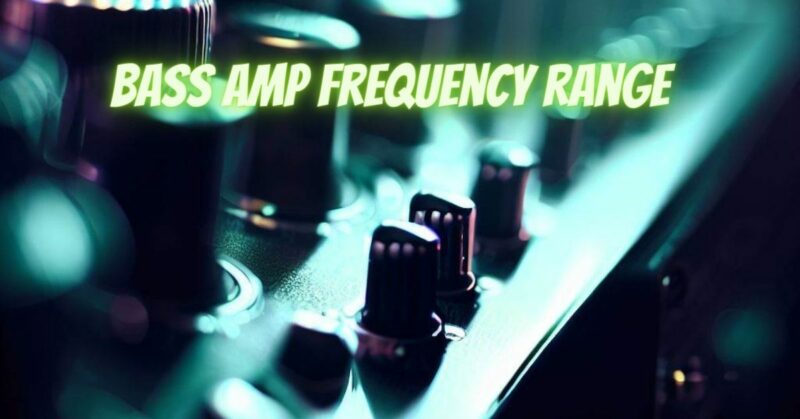Bass amps are specifically designed to amplify the low-frequency range produced by bass guitars and other bass instruments. Understanding the frequency range of a bass amp is essential for bass players to achieve the desired tone and properly amplify their instruments. In this article, we will delve into the frequency range of a bass amp and explain its significance in shaping the bass guitar’s sound.
Frequency Range of a Bass Amp:
The frequency range of a bass amp refers to the span of frequencies it can effectively reproduce. Bass amps are engineered to emphasize and handle the low-end frequencies that are fundamental to bass instruments. While the exact frequency range can vary among different bass amps, a typical bass amp will have a frequency response that extends from around 20 Hz to 20 kHz.
Low-End Response:
The low-end response is a critical aspect of a bass amp’s frequency range. Bass guitars produce fundamental frequencies in the lower register, typically ranging from 40 Hz to 200 Hz. A well-designed bass amp ensures that these low frequencies are reproduced accurately and with sufficient power. This allows the amp to deliver a solid and deep bass foundation, providing the necessary punch and resonance.
Mid-Range and High-End Response:
While the emphasis of a bass amp is on the low frequencies, it is also important to consider the mid-range and high-end response. The mid-range frequencies, roughly ranging from 200 Hz to 2 kHz, contribute to the presence and articulation of the bass sound. A well-balanced mid-range response ensures that the bass notes cut through the mix and maintain clarity. The high-end frequencies, typically above 2 kHz, add definition and harmonics to the bass sound, enhancing the overall tonal character.
Crossover and Speaker Configuration:
In some cases, bass amps feature built-in crossover circuits or speaker configurations to optimize the frequency distribution. Crossovers divide the audio signal into different frequency bands, directing specific frequencies to different speakers or speaker components. This allows for better control and separation of the different frequency ranges, resulting in a more balanced and defined bass sound.
Extended Frequency Range Amps:
While traditional bass amps focus on the fundamental bass frequencies, there are also bass amps available with extended frequency ranges. These amps may have an extended high-end response, allowing for more detailed reproduction of harmonics and overtones. They can be suitable for bassists who require a wider tonal palette or who play styles that involve more intricate playing techniques.
Conclusion:
The frequency range of a bass amp plays a crucial role in shaping the tone and overall sound of a bass guitar. Bass amps are designed to emphasize the low frequencies, delivering a solid and powerful bass foundation. However, a well-balanced frequency response, including the mid-range and high-end frequencies, is essential to achieve clarity, articulation, and tonal definition. Understanding the frequency range of a bass amp helps bass players make informed decisions when selecting an amp that suits their playing style and musical preferences.

